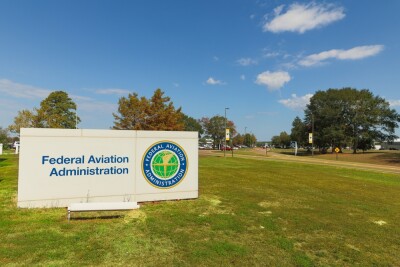VUTURA is a SESAR Horizon 2020 project supporting the development of U-space, the European vision for the safe, secure and efficient handling of drone traffic. The project is designed to validate the practical functionality of U-space services with tests in urban and rural areas. Flight demonstrations are being performed at different locations in The Netherlands (Delft, Enschede, Flevoland Province), in close cooperation with the Civil Aviation Authorities.
VUTURA’s work to validate the efforts of U-space Service Provider (USP) companies is in many respects about enabling a new kind of drone service. Ultimately, USPs are providing a computing service to arrange flight information for drone operators and pilots when it comes to where they can fly, when a flight can happen, how long the flight will take, etc. The ultimate goal of these services is to allow manned and unmanned aircraft to operate in the same airspace in a safe manner. They’ll also incorporate terrain data, obstacle data, information on the weather and any other pieces of relevant information in order to make drone flight operation decisions.The VUTURA Project will be explored in detail during the two-part SESAR-JU Demonstrations Projects session that will take place at Commercial UAV Expo Europe from 9-10 April 2019. Attendees will be able to ascertain a whole new understanding of how U-space will be a key enabler for the growing drone market to generate economic and societal benefits.“In principle, the U-space service provider is like telecommunications providers that allow people to choose whichever option they think has the best interface and service,” said Henk Hesselink, NLR’VUTURA project coordinator in The Netherlands. “The interface can be a web-interface, on a smartphone or via an app, but the specific service that an operator utilizes is up to them. Regardless of your choice, the system will exchange information on the other flights that are registered even if they are registered with the other service providers.”That setup perfectly illustrates one of the goals of the VUTURA project, which is to validate that more than one USP can provide U-space services in a specific piece of airspace. It’s also set to define procedures to manage the drone flights, including the involvement of Air Traffic Control (ATC). Doing so will increase the pace by which European cities and companies exploit emerging technologies related to drones.The different locations in The Netherlands that the VUTURA project is performing demonstrations will also provide vastly different sets of info and insight. From a technical and operational perspective, these are the sorts of demonstrations that will define what U-space services for Europe should look like.“We'll have three demonstrations and each demonstration has a distinct topic that we want to investigate,” Hesselink told Commercial UAV News. “We will fly in a rural area in the Netherlands, where we can demonstrate what the interaction between two drones should be when one of the operations needs to take priority, such as in the case of medical deliveries. We’ll also be operating in the controlled region of an airport, to define what the interaction with the air traffic controllers should look like. The third demonstration will be in the eastern part of the Netherlands, which will link up with a smart city initiative to show how U-space can be used in urban environments.”The demonstrations will also incorporate counter-drone technology, and showcase what happens when drone flights don’t go as planned. Ultimately, this effort should help meet the requirements that are set to be part of the first package of drone regulation from EASA that should be published soon. This package will go a long way toward establishing EU-wide rules for drones of all sizes and types.With that regulatory environment on the horizon, what makes the work being done by VUTURA so critically important? And how will that be highlighted at Commercial UAV Expo Europe?“What we want people to know is that we’re not only providing support to operate drones in areas where you’re currently not allowed to fly but that we can make doing so incredibly easy,” Hesselink explained. “We want to make it easier for the operators so that after picking their USP, they can fly right then and there, or at least know how long it’s going to take before they can. We want to it be a matter of file and fly. That’s something we can support, and I’m looking forward to explaining and discussing with Expo attendees what kind of opportunities will be opened up when it’s that much easier and simpler for everyone to operate safely in the same airspace.” To learn more about the SESAR-JU Demonstration Projects presentations taking place at Commercial UAV Expo Europe, click here.Subscribe
The information you submit will be stored and used to communicate with you about your interest in Commercial UAV News. To understand more about how we use and store information, please refer to our privacy policy.
February 20, 2019
How Will U-space Service Providers Enable and Increase Drone Adoption Across Europe?
















Comments